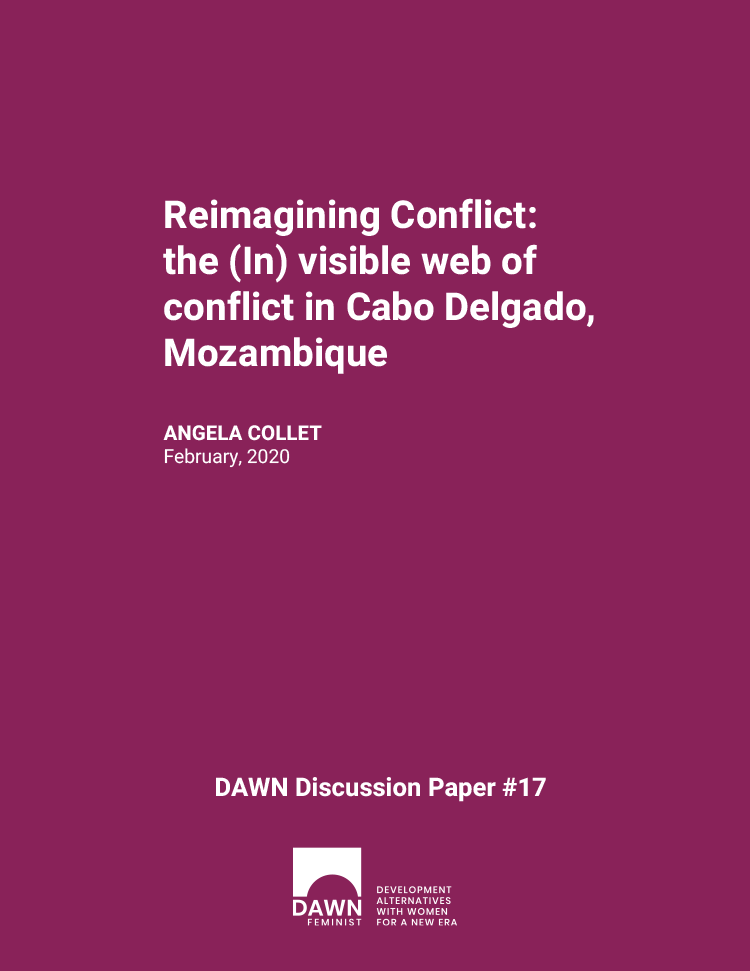Conflict: From the Latin for “to clash or engage in a fight”, a confrontation between one or more parties aspiring towards incompatible or competitive means or ends. Conflict may be either manifested, recognizable through actions or behaviours, or latent, in which case it remains dormant for some time, as incompatibilities are unarticulated or are built into systems or such institutional arrangements as government, corporations, or even civil society. (Glossary, UNPEACE – Africa Programme, 2005)
Ideas about conflict are central to discourses and praxis of peacebuilding. But diverse conceptualisations of conflict notwithstanding, in many cases, a narrow perspective continues to dominate peacebuilding analysis and strategies. Based on complexities in contexts of our current fierce world, nuanced analyses demand an expanded, multidisciplinary, interlinked political economy lens (as put forward by DAWN, 2019) on conflict. Strategies that lead to structural and sustainable change towards peacebuilding require an understanding of intersecting inequalities underlying the context and root causes of conflict. As currently recalled with regard to the Northern Mozambique (Habibe et al., 2019) context of conflict, the complexity of the phenomena requires more in-depth interdisciplinary research that takes into account a multiplicity of historical, social, political, economic and religious factors. Moreover, it suggests that more than bringing conclusions, research can lead to a series of questions.
So, what do we mean by conflict? Reflecting on this question is an exercise in looking at conflict and peacebuilding as a continuous learning process rather than a race, chasing for narrow answers or single agents to blame or criminalise1. A holistic perspective of conflict goes beyond the boundaries of national settings and accounts for historical patterns of structural inequalities and intersecting and layered power relations in any given context. For instance, it is critical to understand “that violence is at the heart of social organisation, and gender relations and violence are mutually constitutive” (Confortini, 2006 in DAWN 2019). Within this perspective, it is key to reflect that “the root causes of violence may well be present prior to, during and in the aftermath of conflict and war” (DAWN, 2019:01 ) and that social justice and democracy2 are key factors to be addressed at the core of the conflict and peacebuilding debate. As noted in the pan-African feminist digital platform Africa Feminism (2019)3 , a notion of Feminist peace also relates to:
“Equal participation at all levels and in all peacebuilding processes. Equal participation would entail addressing gender power relations within households, the community and institutions, interrogate the use of power and masculinities that perpetuate inequalities and normalize the abuse of women. All these different forms of inequalities exist in situations of conflict and post conflict settings”.
The exercise of looking at the same situation from various perspectives does not mean to lose focus. Metaphorically, we can think of it as a holistic view of the forest, which in turn can allow us to gaze at each tree, that are also at the core of the ecosystem, and all of which enable us to live and breathe. The present analysis is based on multiple lenses, including interlinkages (DAWN, 2014) and a body sensitive4 look at conflict situations that the author employed as tools to overcome some of the challenges historically faced by advocates for social justice in dealing with apparently conflicting approaches: combining holistic and crosscutting analysis (i.e. gender integration, inclusion, diversity, etc.) to attain quality focused results for social interventions (i.e. context specific thematic challenges and enforced discriminations). In this way, the exercise proposed is to look at the various domains of (in)visible conflicts, through diverse complementary approaches/lenses carefully applied according to the context.
1 A key question for feminist reflection in that sense (by Mbembe, A. 2003: 12 on Necropolitics): “Is the notion of biopower sufficient to account for the contemporary ways in which the political, under the guise of war, of resistance, or of the fight against terror, makes the murder of the enemy its primary and absolute objective?”
2 An Interview on South Africa’s Violent Democracy notes that “mutually exclusive” and “today’s violence is closely linked to the important changes unfolding in South Africa”. Dialogue reproduction of older patterns of violence. Global Karl von Holdt, 2013 on new forms of violence and the, ISA digital magazine http://globaldialogue.isa-sociology.org/south-africas-violent-democracy-an-interview-
3 Helen Kezie-Nwoha. 28/06/2019: http://africanfeminism.com/what-feminist-peace-means-in-changing-contexts-of-conflicts/ (access 02/10/2019)
4 This approach has been applied since 2011 within the human development work carried out by the author in Cabo Delgado, through the independent project IRUTHU (meaning “Body” in local language Makua).

